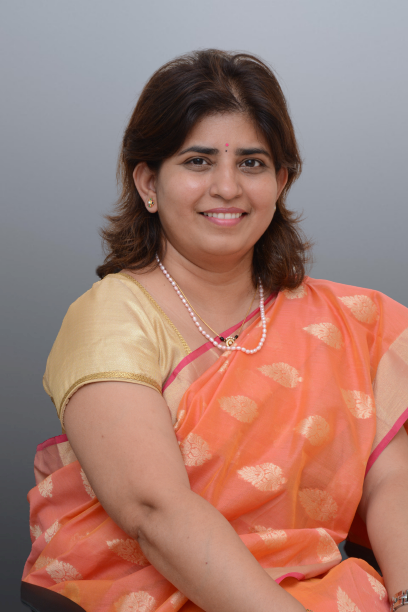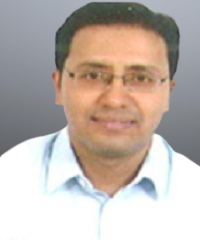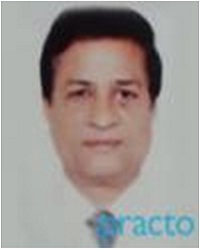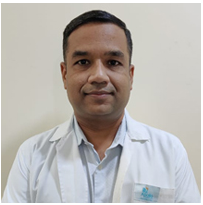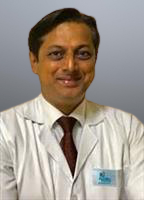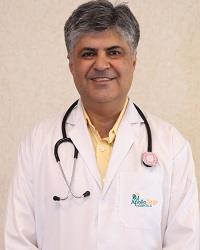Search Result: 38

Dr Aftab Shaikh
MBBS,MS,FICS
Registration No
6287999
Language
English

11 years experience overall

Tardeo , Mumbai
MON- SAT(10:00 AM-12:00 PM)

Dr Almas Khan
MBBS, DNB ,FMAS
Registration No
699236
Language
English, हिंदी, मराठी

6 years experience overall

Tardeo , Mumbai
MON- SAT(10:00 AM-10:15 AM)

Registration No
6299923
Language
English

16 years experience overall

Chembur , Mumbai
MON- SAT(10:00 AM-12:00 PM)

Dr Amol Wagh
MS,M.B.B.S, F.I.C.S(USA), F.I.A.G.E.S.,F.M.A.S.,F.A.I.S.,F.L.C.S.,F.B.M.S.
Registration No
3054055
Language
English

15 years experience overall

Tardeo , Mumbai
TUE, THU, SAT(04:00 PM-06:00 PM)

Dr Charita Pradhan
MBBS, MS, DNB ( General Surgery), MRCS, FRCS.
Registration No
842211
Language
English, हिंदी, मराठी

24 years experience overall

Navi Mumbai , Mumbai
MON- THU, SAT, MON- THU, SAT | MON- THU, SAT, MON- THU, SAT | MON- THU, SAT, MON- THU, SAT | MON- THU, SAT, MON- THU, SAT(10:00 AM-12:00 PM | 02:00 PM-04:00 PM | 12:00 PM-01:00 PM | 04:00 PM-05:00 PM)

Dr Chetan Manohar Shenoy
MBBS,MD
Registration No
6474644
Language
English

13 years experience overall

Tardeo , Mumbai
MON- SAT(10:00 AM-11:00 AM)

Dr Dev Adhikari
MBBS, DNB, MS
Registration No
699440
Language
English, हिंदी, मराठी

10 years experience overall

Tardeo , Mumbai
MON, WED, FRI(06:00 PM-07:30 PM)

Dr Dilip Rajpal
MS (GEN. SURG)
Registration No
3525771
Language
English

23 years experience overall

Chembur , Mumbai
TUE, THU, SAT(03:00 PM-04:00 PM)

Dr Erbaz Momin
MBBS, MS(Surg), DNB(Surg)
Registration No
4159388
Language
English, हिंदी, मराठी

14 years experience overall

Chembur , Mumbai
MON, WED, THU | SAT(05:00 PM-06:00 PM | 02:00 PM-03:00 PM, 05:00 PM-06:00 PM)

Dr Jignesh Gandhi
MBBS,MS,DNB
Registration No
6256589
Language
English

23 years experience overall

Chembur , Mumbai
MON- SAT(10:00 AM-12:00 PM)

Dr K Vaswani
MBBS, MS
Registration No
5609708
Language
English

36 years experience overall

Chembur , Mumbai
MON- SAT(04:00 PM-06:00 PM)

Dr Ketan Marker
MS (GEN SURG)
Registration No
5525095
Language
English, हिंदी, मराठी

32 years experience overall

Chembur , Mumbai
TUE, FRI(05:00 PM-06:00 PM)

Dr Ketan Marker
MS (GEN SURG)
Registration No
6299782
Language
English

21 years experience overall

Chembur , Mumbai
MON- SAT(10:00 AM-12:00 PM)

Registration No
5512441
Language
English, हिंदी

37 years experience overall

Tardeo , Mumbai
MON- FRI(06:00 PM-07:00 PM)

Dr Kiran Shah
MBBS; MS (GEN.SURGERY); FACRSI
Registration No
700266
Language
English, हिंदी, मराठी

27 years experience overall

Tardeo , Mumbai
MON- SAT(10:00 AM-10:10 AM)

MON, WED, FRI(12:00 PM-02:00 PM)

Dr Laxman Salve
MBBS, MS General Surgery
Registration No
3471312
Language
English, हिंदी, मराठी

20 years experience overall

Chembur & Tardeo , Mumbai
TUE, THU, SAT(07:30 PM-08:30 PM)

Dr Laxman Salve
MS (GEN SURGERY), FACRSI, FIAGES, TR. FELLOWSHIPIN COLON & RECTAL SURGERY (USA)
Registration No
6354695
Language
English

11 years experience overall

Chembur , Mumbai
MON | TUE | WED | THU | FRI | SAT(10:00 AM-12:00 PM | 10:30 AM-10:40 AM, 11:20 AM-11:30 AM | 10:10 AM-10:20 AM, 11:00 AM-11:10 AM, 11:50 AM-12:00 PM | 10:10 AM-10:20 AM, 10:40 AM-10:50 AM, 11:10 AM-11:20 AM, 11:40 AM-11:50 AM | 10:00 AM-12:00 PM | 10:00 AM-10:20 AM, 10:40 AM-10:50 AM, 11:10 AM-11:20 AM, 11:40 AM-11:50 AM)

Dr Manoj Gandhi
MBBS, DNB -General surgery
Registration No
6287515
Language
English

15 years experience overall

Tardeo , Mumbai
MON- SAT(10:00 AM-12:00 PM)

Dr Nitish Jhawar
MBBS, MS ( General Surgery)
Registration No
1449947
Language
English, हिंदी

24 years experience overall

Navi Mumbai , Mumbai
MON- SAT | MON- SAT | MON- SAT, MON- SAT | MON- SAT, MON- SAT(05:00 PM-07:00 PM | 10:00 AM-01:00 PM | 09:30 AM-10:00 AM | 07:00 PM-08:00 PM)

Dr Prashant Jadhav
MBBS,MS,FMAS,FIAGES,FAIS,FICS
Registration No
5759649
Language
English

11 years experience overall

Chembur , Mumbai
SUN- SAT(11:00 AM-12:00 PM)

Dr Prashant Mullerpatan
MBBS, MS (Gen)
Registration No
4168894
Language
English, हिंदी, मराठी

25 years experience overall

Chembur , Mumbai
WED, FRI(04:00 PM-06:00 PM)

Dr Pravin Gore
MBBS, DNB - General Surgery
Registration No
2794284
Language
English, ગુજરાતી, हिंदी, मराठी

16 years experience overall

Chembur & Tardeo , Mumbai
SAT(12:00 PM-02:00 PM)

Dr Rajeev Naik
MBBS , MS
Registration No
4848495
Language
English

17 years experience overall

Chembur , Mumbai
MON- SAT(12:00 PM-02:00 PM)

Dr Reshma Palep
MBBS; MS(General Surgery); DNB(GENERAL SURGERY); MRCS(EDINBURG)
Registration No
700263
Language
English, हिंदी, मराठी

12 years experience overall

Tardeo , Mumbai
MON- SAT(10:00 AM-10:15 AM)

Registration No
5512486
Language
English, हिंदी

27 years experience overall

Tardeo , Mumbai
MON- SAT(10:00 AM-10:10 AM)

Dr Riti Shah
MBBS, DNB (GEN. SURG.)
Registration No
6201158
Language
English

6 years experience overall

Tardeo , Mumbai
MON- SAT(09:00 AM-11:00 AM)

Dr Sandip Bipte
MBBS,MS
Registration No
5176060
Language
English

9 years experience overall

Chembur , Mumbai
MON- SAT(10:00 AM-12:00 PM)
Frequently Asked Questions for Epigastric Hernia in Mumbai
Surgery is usually the recommended treatment for epigastric hernias. However, in some cases where the hernia is small and not causing symptoms, your doctor may suggest watchful waiting with regular monitoring.
You should seek medical attention if you have symptoms like severe pain, nausea, vomiting, or if the bulge becomes firm, tender, or red. These symptoms may indicate a complication such as incarceration or strangulation and require immediate evaluation by a doctor.
While it is rare for an epigastric hernia to rupture, it can become strangulated. Strangulation happens when the blood supply to the hernia is cut off, leading to tissue damage. This requires immediate surgical intervention.
The pain experienced with an epigastric hernia can vary from person to person. Some individuals may have no pain or discomfort, while others may experience mild to moderate pain in the upper abdomen, especially when lifting heavy objects or straining the abdominal muscles.
Complications of epigastric hernia surgery can include infection, bleeding, injury to surrounding organs or blood vessels, recurrence of the hernia, and reaction to anaesthesia. These complications are relatively rare. It is important to discuss potential risks with your surgeon before the procedure.
If an epigastric hernia is left untreated, it can potentially lead to complications such as increased pain, enlargement of the hernia, and the possibility of the hernia becoming incarcerated or strangulated. These complications may require surgery.
The duration of epigastric hernia surgery is based on various factors such as the size and complexity of the hernia, the chosen surgical technique (open or laparoscopic), and individual patient factors. On average, the surgery may take 30 minutes to 2 hours.
The eligibility for epigastric hernia surgery is determined by a doctor after a thorough examination. Generally, individuals who have symptoms such as pain, discomfort, or a visible bulge in the upper abdomen caused by an epigastric hernia are considered eligible for surgery.
After epigastric hernia surgery, it is important to follow your doctor’s instructions for proper recovery. You may be asked to avoid heavy lifting or strenuous activities for a few weeks, keep the incision area clean and dry, and take prescribed pain medication as directed.
The recovery time for epigastric hernia surgery varies from person to person. The average patient can return to normal activities in a few weeks, but it may take several months to fully recover. Following post-operative instructions provided by the surgeon is essential for full recovery.
Before undergoing epigastric hernia surgery, your doctor may have you undergo some tests such as blood work, imaging scans, or ECG to assess your overall health. You may also be asked to avoid eating or drinking for a certain period before the surgery. Additionally, inform your surgeon about any medications you are taking.
The success rate of epigastric hernia surgery is generally high, with most patients experiencing relief from symptoms and no recurrence of the hernia. However, the success rate may vary depending on individual factors such as overall health and hernia size.
A general surgeon or a surgical gastroenterologist usually performs an epigastric hernia surgery. These doctors have specialised training in performing surgeries to repair hernias.
The two common types of epigastric hernia surgeries are open repair and laparoscopic repair. In open repair, the protruding tissue is pushed back into place using an incision. In laparoscopic repair, small incisions are made, and a camera and instruments are used to repair the hernia.
An epigastric hernia is a condition where there is a small bulge or protrusion in the upper middle part of the abdomen, known as the epigastrium. This happens when fat or tissue pushes through a weak spot in the abdominal muscles.
Related Procedures in Mumbai
- Doctors for Appendicitis in Mumbai
- Doctors for Inguinal Hernia in Mumbai
- Doctors for Incisional Hernia in Mumbai
- Doctors for Endoscopy in Mumbai
- Doctors for Colonoscopy in Mumbai
- Doctors for Umbilical Hernia in Mumbai
- Doctors for Whipple procedure in Mumbai
- Doctors for ERCP Stone Removal in Mumbai
- Doctors for Epigastric Hernia in Mumbai
- Doctors for Sleeve gastrectomy in Mumbai
- Doctors for Piles Surgery in Mumbai
- Doctors for Gallstones Removal in Mumbai
Related Treatments in Mumbai
- Doctors for Cirrhosis Treatment in Mumbai
- Doctors for Constipation Treatment in Mumbai
- Doctors for Crohns Disease Treatment in Mumbai
- Doctors for Gallstones Treatment in Mumbai
- Doctors for Irritable Bowel Syndrome Treatment in Mumbai
- Doctors for Portal Hypertension Treatment in Mumbai
- Doctors for Rectal Prolapse Treatment in Mumbai
- Doctors for Ulcerative Colitis Treatment in Mumbai
Other Specialities in Mumbai
- Best Urologist in Mumbai
- Best Pulmonologist in Mumbai
- Best General Physician in Mumbai
- Best Endocrinologist in Mumbai
- Best Cardiologist in Mumbai
- Best Oncologist in Mumbai
- Best Radiologist in Mumbai
- Best Orthopedics in Mumbai
- Best Hepatologist in Mumbai
- Best Gynecologist in Mumbai
- Best Dermatologist in Mumbai
- Best Gastroenterologist in Mumbai
- Best Psychologist in Mumbai
- Best Ent Specialist in Mumbai
- Best Nephrologist in Mumbai
- Best Rheumatologist in Mumbai
- Best Diabetologist in Mumbai
- Best Psychiatrist in Mumbai
- Best Neonatologist in Mumbai
- Best Dentist in Mumbai
- Best Dietitian in Mumbai
- Best Haematologist in Mumbai
- Best Pediatrics in Mumbai
- Best General Surgeon in Mumbai
Top Hospitals in India
- Hospitals in Ahmedabad
- Hospitals in Bangalore
- Hospitals in Bhubaneswar
- Hospitals in Bilaspur
- Hospitals in Chennai
- Hospitals in Delhi
- Hospitals in Guwahati
- Hospitals in Hyderabad
- Hospitals in Indore
- Hospitals in Kolkata
- Hospitals in Madurai
- Hospitals in Mumbai
- Hospitals in Mysore
- Hospitals in Nashik
- Hospitals in Noida
- Hospitals in Visakhapatnam
- Hospitals in Lucknow
- Hospitals in Bhopal
- Hospitals in Karur
- Hospitals in Kochi
- Hospitals in Nellore
- Hospitals in Trichy
- Hospitals in Kakinada
© Copyright 2024. Apollo Hospitals Group. All Rights Reserved.
 +91 8069991061
Book Appointment
+91 8069991061
Book Appointment






 Call Now
Call Now
